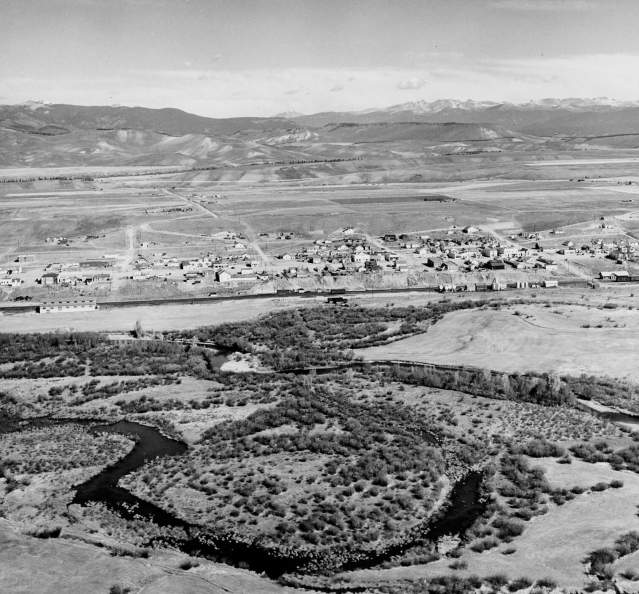The “Judge”
In the summer of 1865, “Judge” Joseph L. Wescott was known to have been living next to Hot Sulphur Springs. Wescott served in the Civil War as a private in Company G, First Colorado Calvary in spite of the fact he was near sighted. It’s not known how he became known as the “Judge” because he had never practiced law. He was, however, quite adept as a writer.
Wescott also sought the springs as a comfort to his terrible bouts with arthritis. The healing water had worked wonders for his creaking old joints and when William Byers took up residence at the springs, Joseph moved on up the Grand River (Colorado) to Grand Lake where he erected several log cabins and practiced his fishing. The fishing was so good that he and friend John Barbee caught and sold hundreds of pounds of trout in Georgetown and Denver during the summer months. He was known to have tipped the bottle heavily once or twice a year with guns literally blazing, but he never caused anybody harm during these outages. “Judge” Joseph played a large role in Grand Lake’s history.
HOT SULPHUR SPRINGS GETS AN OWNER
William N. Byers had come to Colorado during the Pikes Peak mining rush. His primary reputation at the time was as founder of the Rocky Mountain News although, he was also interested in mining, scientific agriculture and especially real estate. It’s believed that he first beheld Hot Sulphur Springs when he encountered Bonesteel’s troopers there in August of 1863. William knew then that he wanted to lay claim to the springs.
In 1865, Byers paid two more visits to Hot Sulphur Springs. The intent of the first visit was to perform a survey of the area and on the second visit he and his ten year old son, Frank, built a small log cabin. During the following year Joseph L. Wescott was induced, by Susan Boshman, to sell his 160 acre claim of the springs for $500 and moved up river to Grand Lake.
Byers, performing as interpreter of the wilderness for a large traveling party of politicians, a newspaper editor, several military officers of rank and a few carefully selected “ladies and gentlemen”, again visited the springs in August, 1868. Upon arrival to Hot Sulphur Springs they discovered the surrounding meadows occupied by about 800 Ute’s. It was during this expedition that William Bross, former Lieutenant-Governer of Illinois, left his name on the small peak rising above the springs.
In autumn of 1868, the Land Office received authorization and the funding to perform a detailed survey of Middle Park. By October 25th, with William L. Sumner (a brother-in-law) and two other men named Frank J. Wheeler and Frank C. Marshall, Byers began the initial township to be platted which happened to contain the Hot Sulphur Springs area. The plat was complete by November 3 and of particular note is the absence of any indication that the springs existed. On October 23, 1869 Byers became the owner of the 160 acres immediately surrounding Hot Sulphur Springs for the sum of $3000.00. Wheeler laid claim to another adjacent 160 acre plot which he immediately sold to Byers and Sumner eventually sold his 160 acres to Byers in 1874.
This was the birth of the Hot Sulphur Springs resort we enjoy today and, although Byers’ spa was never quite the gold mine he dreamed of, it has made its mark in the history of Middle Park. Grand County had been established in 1873 and, for many years, access to this wilderness would prove the largest obstacle to overcome in spite of the effort of Byers and his Rocky Mountain News.




